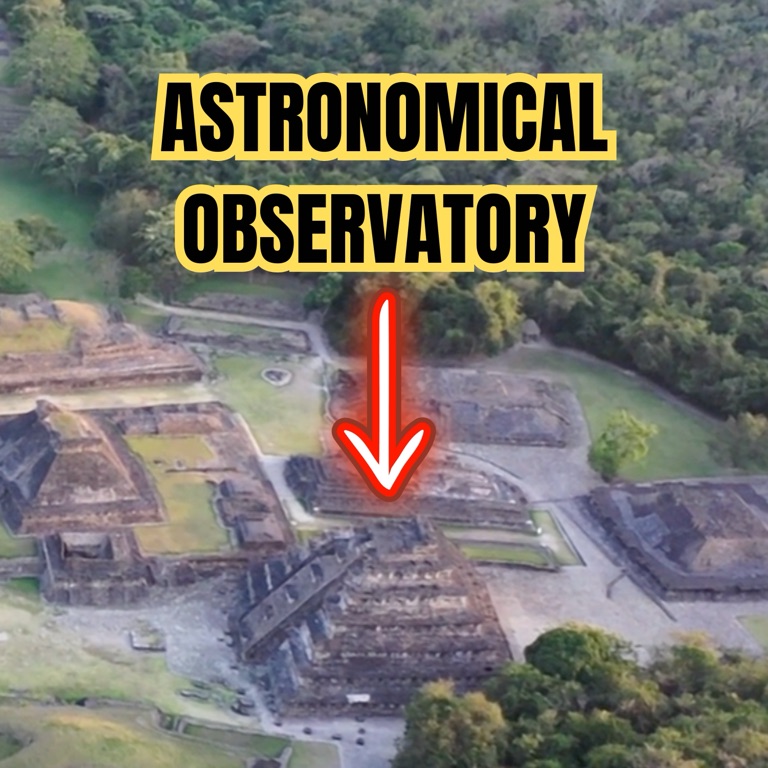Summary
Introduction to El Tajín
El Tajín stands as a testament to the ingenuity of the Totonac people. Nestled in the lush landscapes of Veracruz, Mexico, this ancient city echoes with the stories of its past. El Tajín’s architecture showcases intricate designs and an advanced understanding of engineering. Visitors marvel at the iconic Pyramid of the Niches, famous for its precise structure. This site serves not just as a historical treasure but also a cultural nexus. El Tajín represents the Totonac civilization at its zenith, offering a unique window into pre-Hispanic life.
Get your dose of History via Email
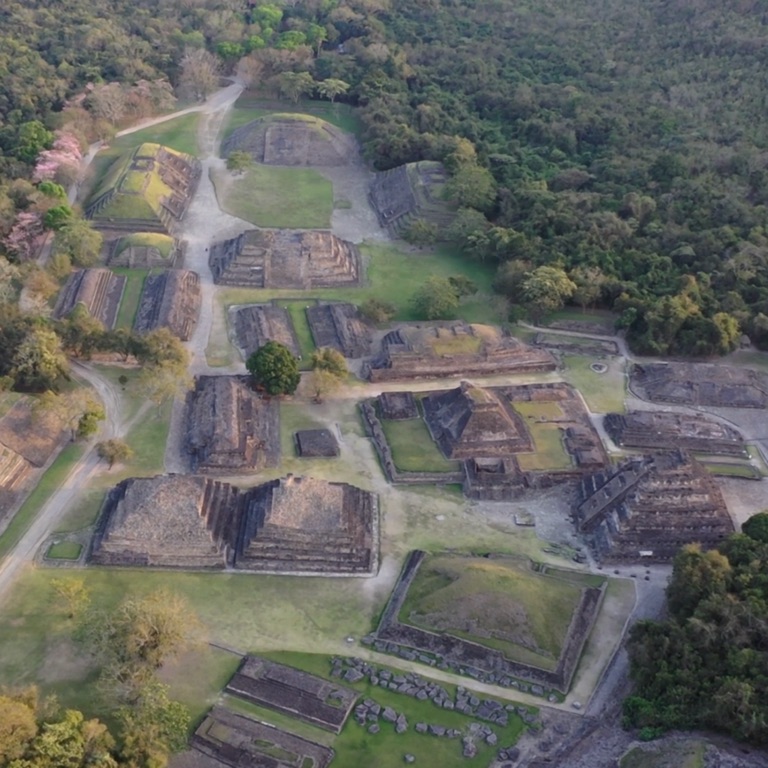
Architectural Marvels and Rituals
The city’s layout reveals a deep connection between daily life, celestial events, and religious practices. El Tajín’s edifices align with astronomical phenomena, demonstrating the Totonacs’ vast knowledge of the skies. The site also reveals a complex network of ball courts. This emphasizes the role of the ritual ballgame in social and religious contexts. The game itself transcended mere competition. It was a potent symbol of rebirth and the cycle of life and death.
Preservation and Significance
Today, El Tajín is a UNESCO World Heritage site. It is steeped in efforts to preserve and understand the majesty of Mesoamerican cultures. Archaeological work continues to uncover secrets locked within its stone walls. Research provides insight into the Totonac people and their contributions to history. El Tajín is a vital cultural heritage site. It educates and inspires those who visit. It connects the present to the rich tapestry of the past.

Historical Background of El Tajín
El Tajín, enveloped by the verdant landscapes of Veracruz, Mexico, remains an enigma of Mesoamerican history. Its origins trace back to the early part of the common era, yet the city reached its pinnacle between 800 and 1150 A.D. The site bears the name of the Totonac rain god, echoing the city’s spiritual significance. As an important cultural and commercial center, El Tajín forged connections across ancient Mesoamerica, fostering trade and cultural exchange far and wide.
The Rise of the Totonac Civilization
The Totonac people, the masterminds behind El Tajín’s grandeur, crafted a city that was a marvel of their time. Ingenious urban planning is evident in the city’s expansive plazas and pyramids. Significant structures like the Pyramid of the Niches display a deep understanding of geometry and astronomy. Furthermore, El Tajín illuminates the societal hierarchy and the role of the elite. These nobles governed daily life, orchestrated religious rituals, and oversaw the grandiose cityscape.
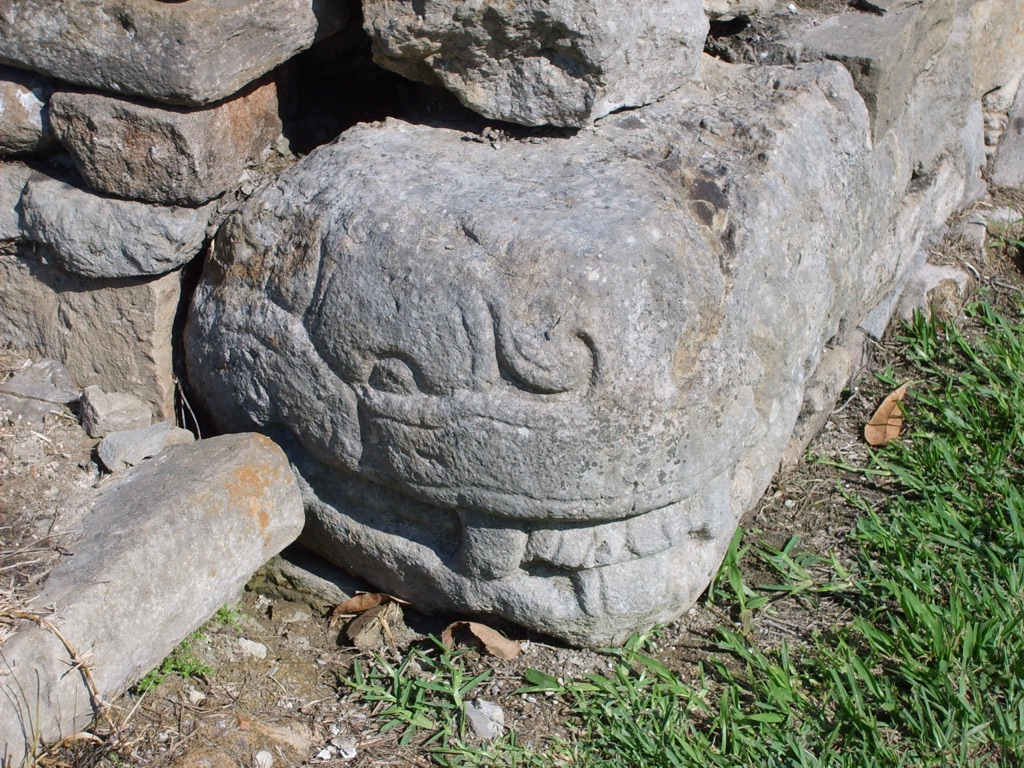
El Tajín’s Architectural Ingenuity
It’s architectural feats exemplify the Totonacs’ mastery of design and construction. Builders incorporated intricate carvings and detailed iconography into temple walls. This etched the city’s history and mythology into stone. The vast array of buildings, from majestic temples to complex administrative centers, stands as a testament to this advanced civilization. Moreover, the city’s ball courts, where the sacred game of life and death unfolded, highlight the profound religious underpinnings.
Cultural Practices and Daily Life
Everyday life in El Tajín revolved around agriculture, religion, and the marketplace. Ritual ceremonies, marked by offerings and elaborate rites, synchronized with the agricultural calendar. This melding of the sacred and mundane represented the Totonacs’ reverence for the natural world. Additionally, the bustling marketplace signaled El Tajín’s economic vigor. It served as the hub for exchange, where diverse goods and ideas could proliferate among Mesoamerican peoples.
El Tajín’s decline remains as shrouded in mystery as its rise to power. By the arrival of the Spanish in the early 16th century, the city was already in ruins, its glory days long behind it. Today, El Tajín serves as a crucial archaeological site. It offers unparalleled insights into Totonac culture and Mesoamerican heritage. Efforts to preserve and study El Tajín ensure that this monumental city will enlighten and fascinate for generations to come.
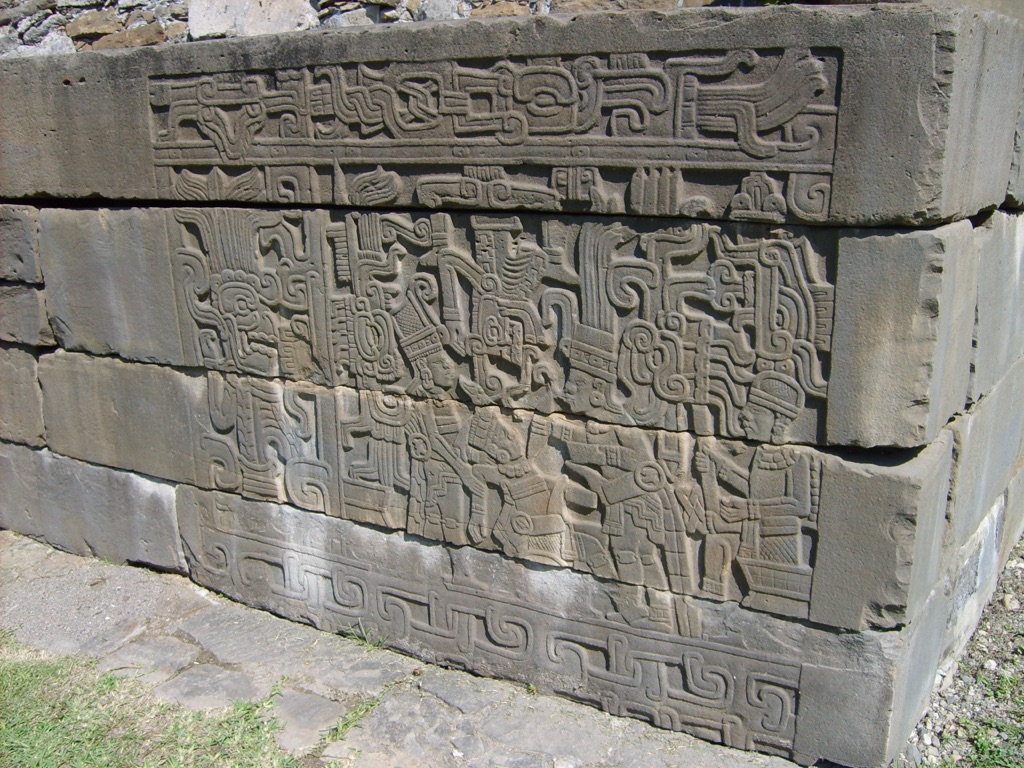
The Discovery of El Tajín
The Initial Unveiling of El Tajín
El Tajín was unveiled to the modern world in 1785 by engineer Diego Ruiz. While seeking a tobacco route in the Sierra Madre Oriental, Ruiz stumbled upon the ruins. Unlike anything known at the time, the site’s immense stone pyramids were rapidly consumed by the jungle. The initial reports detailed a vast city of grand design and mysterious origin, sparking intrigue.
Early Investigations and Public Interest
Following Ruiz’s findings, interest in El Tajín surged among scholars and explorers. Early expeditions focused on mapping the ruins, often hindered by dense vegetation. In 1831, explorer Guillermo Dupaix conducted a significant survey, revealing the site’s complex architecture. His work painted a vivid picture of El Tajín, capturing the imagination of the public and academics alike.
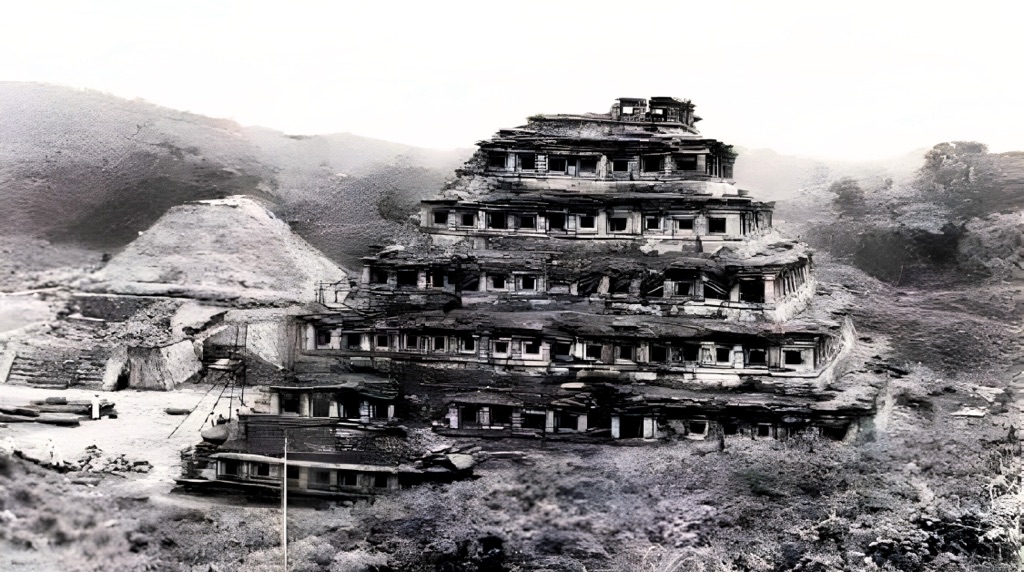
Archaeological Breakthroughs
Archaeologist José García Payón led transformative excavations at El Tajín from 1943 to 1963. His team made groundbreaking discoveries, including the famed Pyramid of the Niches. Payón’s meticulous documentation offered unprecedented insights, cementing El Tajín’s historical importance. The site’s intricate iconography and advanced urban planning were finally brought into the spotlight.
The 20th century brought El Tajín into the academic forefront. Excavations uncovered well-preserved reliefs and artifacts, confirming the city’s cultural and religious significance. These finds, such as the detailed depictions of the ritual ballgame, provided invaluable context for Mesoamerican studies. El Tajín’s place as a key archaeological and historical resource was thus established.
The Discovery of El Tajín continues to inform our understanding of pre-Columbian history. It draws scholars and tourists alike, eager to glimpse its ancient splendors. The site, now a UNESCO World Heritage, stands as a link to the opulent past of the Totonac people. Its ongoing study reflects a dedication to preserving this magnificent chapter of human history.
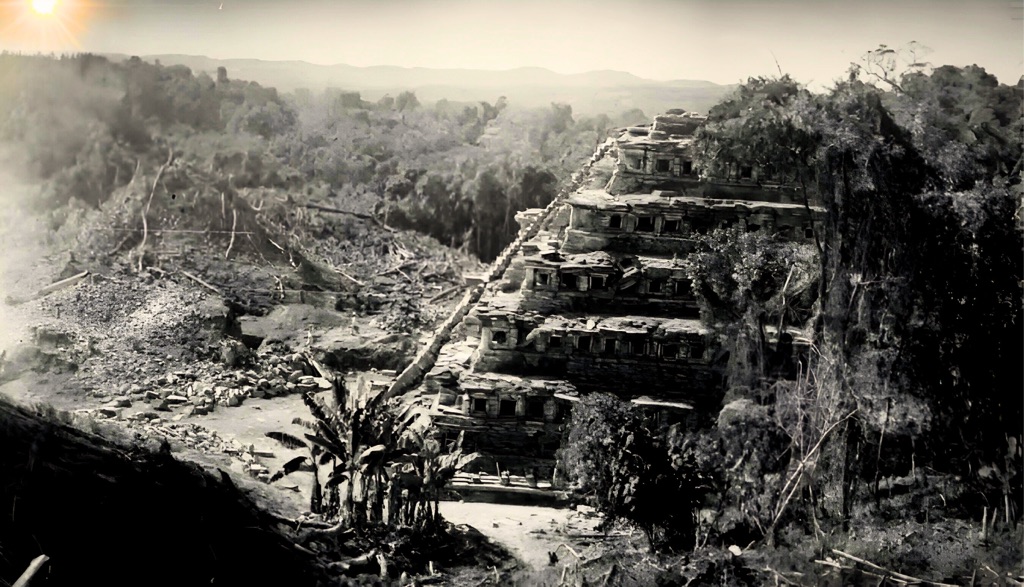
Cultural Significance, Dating Methods, Theories and Interpretations
The Cultural Heart of the Totonac People
El Tajín symbolizes the cultural zenith of the Totonac civilization, revered as a site of religious significance. Its temples and altars played host to rituals that sought to appease the deities for fertility and rainfall. The city’s name, derived from the Totonac rain god, underscores this spiritual connection. Additionally, the intricate reliefs that adorn the walls detail the complexities of their cosmology and ritual practices, positioning El Tajín as a vital repository of ancient knowledge.
Reviving the Past: Dating El Tajín
Dating methods, such as radiocarbon dating and stratigraphy, have played a crucial role in unraveling El Tajín’s timeline. Using these techniques, researchers have established that the rise of El Tajín likely occurred around 600 A.D., with its peak from 800 to 1150 A.D. These methods offer glimpses into the construction phases and various epochs of occupation. By dating ceremonial offerings and construction layers, archaeologists have pieced together the site’s developmental history, providing a chronological framework for its rise and fall.
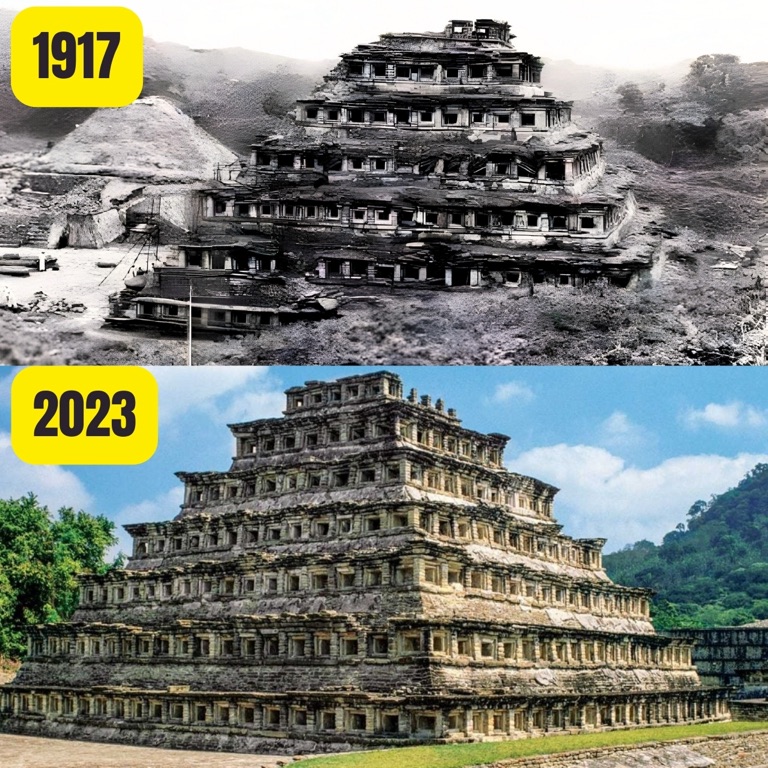
The Sphinx of Mesoamerica: Unanswered Questions and Emerging Theories
Despite extensive research, many aspects of El Tajín remain enshrouded in mystery. Scholars debate over the reasons for its decline and eventual abandonment. Some theories suggest environmental factors, while others point to internal strife or shifts in trade routes. The meaning behind some of the site’s iconography also remains elusive. Researchers continue to analyze the motifs and inscriptions, hoping to decode the messages left behind by the Totonac artisans.
Interpretations of El Tajín have evolved over time, influenced by the discovery of new data. For instance, recent excavations have highlighted the city’s economic significance, challenging the view of El Tajín as solely a ceremonial center. The presence of extensive market areas suggests a bustling trade hub that attracted merchants from various regions, providing a different lens through which to view the site’s historical role.
Cultural exchanges have been illuminated through the study of its art and architecture. Influences from other Mesoamerican cultures, such as the Maya and the Aztecs, are evident in its design. This intercultural mingling points to the site’s role as a confluence of civilizations, showcasing a tapestry of exchange and assimilation that enriched the Totonac legacy.
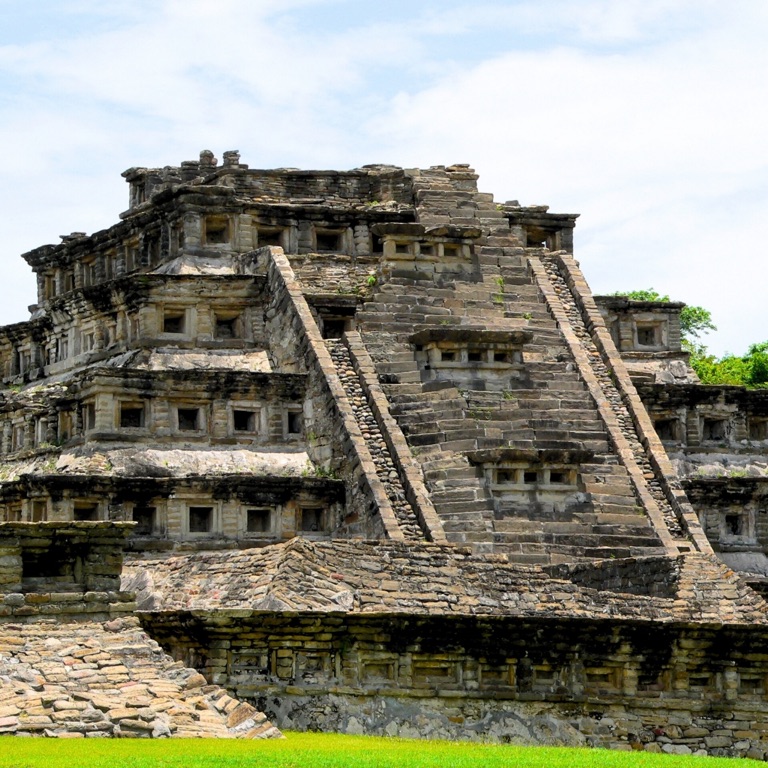
Conclusion and Sources
In sum, El Tajín offers a unique glimpse into the ancient Totonac civilization and the broader Mesoamerican world. Its sophisticated architecture and the wealth of its cultural artifacts speak to a society that valued ritual, trade, and the arts. The dating techniques and ongoing archaeological research not only enhance our understanding of its historical timeline but also afford us deeper insights into the daily lives of its inhabitants. As new theories emerge and interpretations evolve, El Tajín continues to captivate scholars and visitors alike, firmly holding its place as a significant site of cultural heritage.
For further reading and to validate the information presented in this article, the following sources are recommended:
Or you can check any of these reputable archaeological and historical texts:
Pool, C. A. (2007). Olmec Archaeology and Early Mesoamerica. Cambridge University Press.
Stuart, D. (2000). The Inscriptions from Temple XIX at Palenque. The Pre-Columbian Art Research Institute.
Diehl, R. A. (1983). Tula: The Toltec Capital of Ancient Mexico. Thames & Hudson.
Healy, P. F. (1980). Archaeology of the Rivas Region, Nicaragua. Wilfrid Laurier University Press.
Kubler, G. (1984). The Art and Architecture of Ancient America, Third Edition: The Mexican, Maya and Andean Peoples. Yale University Press.

